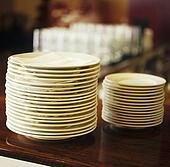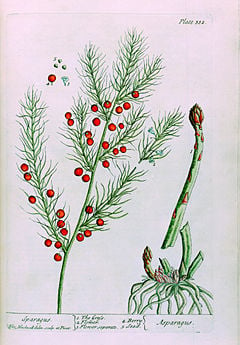Popeye the Sailor Man knew his Spinacia oleracea and so should the rest of us gardeners. What ol' Popeye didn't know was it's so very easy to grow that we don't need to pop a can when we need an extra boost of nutrients.

Nutrition facts about 1 cup of raw spinach:
What does this mean to modern day Popeyes?
A serving of spinach has more iron than a hamburger sandwich and way less fat. No way! Yes, way!
It's rich in antioxidants - those wonderful cancer fighting and inflammatory preventing lovelies.
Spinach can be grown in your garden or mixed with flowers. Planted several times a summer, you may have a batch from Spring to Frost. In our southern states, it may overwinter.
Old varieties of spinach (Savoy) may bolt early. Bolting is basically going to seed which is pretty much the end of the plant. New varieties of flat/smooth and semi-savoy are slower to bolt, typically have wider leaves and may be less bitter.
The good news about growing your own spinach is you will know there is no pesticide residue and no radiation or nitrogen gas used on your leaves (something you can't be sure of in the market place.) The industry was hard hit 2006 after an E. coli scare, 2007 salmonella outbreak and may again be hit due to problems in Japan. The US standards for growing/selling spinach are strict. Guaranteed "organically grown" spinach is also an option. Two major importers of spinach are Mexico and China. You may come down on either side of buying or growing your spinach - today I'm talking about gardeners growing their spinach needs.
Fresh spinach should be used as-soon-as possible after picking to keep the nutrients at peak levels. It's also recommended spinach not be boiled over one minute.
There are so many different kinds of recipes for spinach, we can find one (or many) that pleases you and your family. It is a meat substitute during Lent and an ingredient in most every category (well maybe not cake or candy, but still..) Yep, I'm a spinach lover - I yam!

Nutrition facts about 1 cup of raw spinach:
- Zero fat
- Zero cholesterol
- Zero carbohydrates
- 181% Vitamin K
- 56% Vitamin A
- 47.4% Omega 3 Fatty Acids
- 15% Foliate
- 14% Vitamin C
- 13% Manganese
- 7.8% Omega 6 Fatty Acids
- 6% Magnesian
- 5% Iron
- 5% Potassium
- 3% Vitamin B6
- 3% Ribofabin
- 3% Calcium
- 3% Vitamin E
- 3% Dietary fiber
- 2% Thiamin
- 2% Copper
- 1% Niacin, Zinc, Sodium, Phosphorus
What does this mean to modern day Popeyes?
A serving of spinach has more iron than a hamburger sandwich and way less fat. No way! Yes, way!
It's rich in antioxidants - those wonderful cancer fighting and inflammatory preventing lovelies.
Spinach can be grown in your garden or mixed with flowers. Planted several times a summer, you may have a batch from Spring to Frost. In our southern states, it may overwinter.
Old varieties of spinach (Savoy) may bolt early. Bolting is basically going to seed which is pretty much the end of the plant. New varieties of flat/smooth and semi-savoy are slower to bolt, typically have wider leaves and may be less bitter.
The good news about growing your own spinach is you will know there is no pesticide residue and no radiation or nitrogen gas used on your leaves (something you can't be sure of in the market place.) The industry was hard hit 2006 after an E. coli scare, 2007 salmonella outbreak and may again be hit due to problems in Japan. The US standards for growing/selling spinach are strict. Guaranteed "organically grown" spinach is also an option. Two major importers of spinach are Mexico and China. You may come down on either side of buying or growing your spinach - today I'm talking about gardeners growing their spinach needs.
Fresh spinach should be used as-soon-as possible after picking to keep the nutrients at peak levels. It's also recommended spinach not be boiled over one minute.
There are so many different kinds of recipes for spinach, we can find one (or many) that pleases you and your family. It is a meat substitute during Lent and an ingredient in most every category (well maybe not cake or candy, but still..) Yep, I'm a spinach lover - I yam!

















































